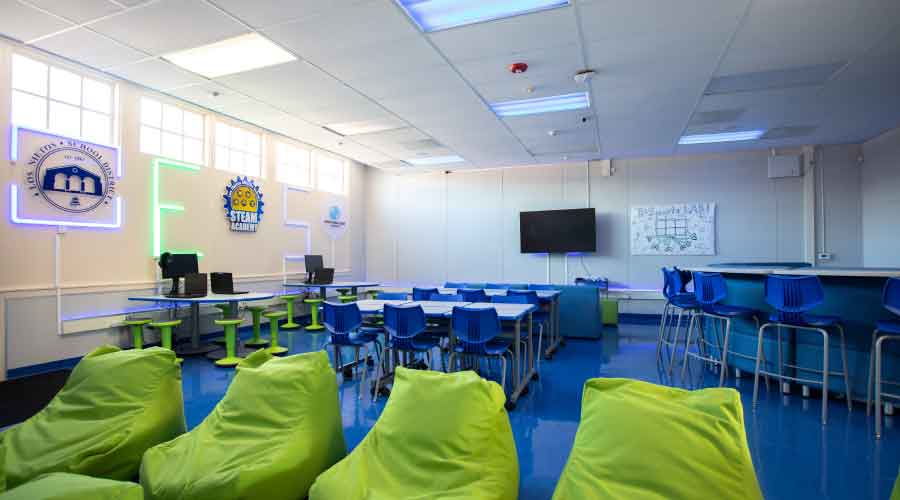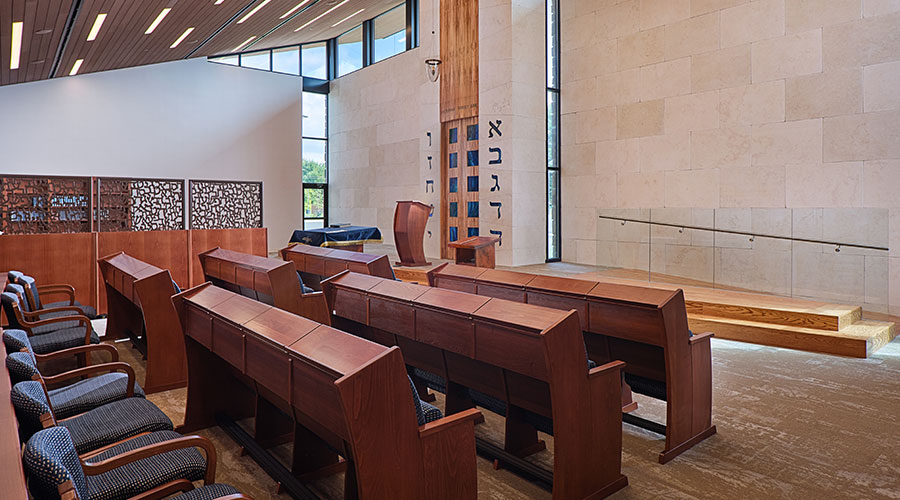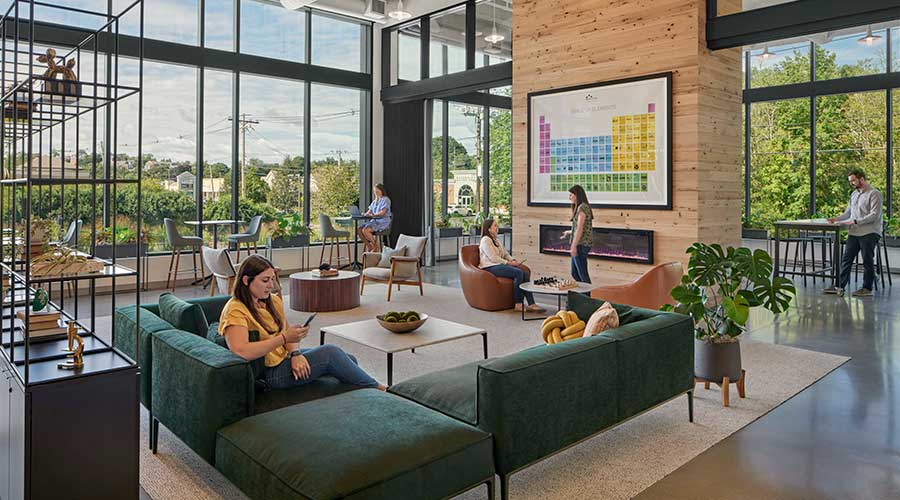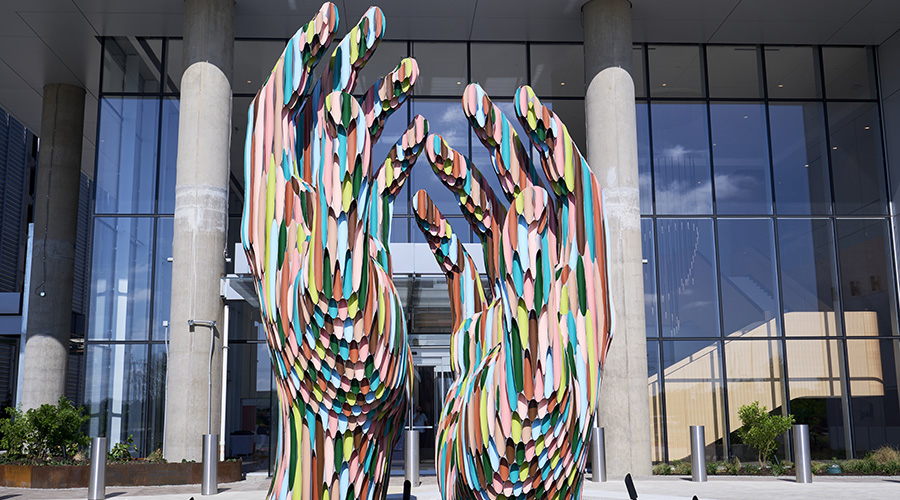Designing for Esports in K-12 Schools
Esports is rapidly growing as a popular extracurricular activity. Does your school have a proper space for it?
When one thinks of extracurricular activities in a K-12 school, typically sports, yearbook, key or other traditional clubs come to mind. However, one activity rapidly growing in popularity among students is esports.
Just as sports need a proper space and equipment for players to excel, esports are the same. The design space needs to encourage teamwork, enhance performance, and foster a sense of community.
Kimberly Wiggs, director of Education at Tangram Interiors, explains more about the role of esports in K-12 schools and how facility managers can create the perfect space for this extracurricular activity.
FacilitiesNet: To put us all on the same page, what are esports?
Wiggs: Essentially, esports are competitive, multi-player online video games played in front of spectators. Esports differ from traditional online gaming – an individual activity, played at home, among friends. Regular online gaming is not done in a community and is not for the public consumption. Right now, esports are being incorporated into K-12 schools as extra-curricular activities, and it’s happening at a rapid pace.
FacilitiesNet: Why do esports belong in K-12 schools and what are the benefits?
Wiggs: The primary benefits of esports in schools are social and emotional well-being, fostered through the creation of a gaming community.
If you think back to high school, you’ll recall frenzied pep rallies that centered on the football team. The concept of school spirit was often lost on introverted students or those who were not into sports. With esports, team and school spirit is instilled in students who were previously on the periphery. It’s especially important that we design spectator areas in esports rooms so others can become a part of the excitement, even if they don’t game.
Recently, I designed an office and gaming space for a professional gaming team, affiliated with one of the major sports teams in Los Angeles. One of the professional gamers remarked that people who play “fit sports” (traditional, physical sports) learn important skills like team work, failure, responsibility, collaboration and communication. Until this point, there really hasn’t been a way for non-athletes to learn those skills. With esports, there is.
FacilitiesNet: Are K-12 school curriculums incorporating esports?
Wiggs: Not at the moment. It’s currently an extracurricular activity that takes place in after-school clubs and not for class credit. I haven’t yet seen traditional subjects, like English or Math, linked with esports or vice versa. However, I do see extra-curricular activities, like Robotics and VR, come together with esports. We just designed a space at a school and, when I first met the administrators, they explained, “this area is an esports area; this is our Robotics table; and this is the VR goggle area.” I’ve also seen a lot of the arts – film production classes in middle schools, for example – collaborating with the esports teams, using green screens.
FacilitiesNet: What are the main design considerations when you build a space for esports in a school?
Wiggs: There are three major questions we ask:
- Does it enhance an individual gamer’s performance?
- Can we facilitate a teamwork environment in the same space?
- How will the space will help build a community that extends beyond the people playing?
As for performance, we take into account things like the work surface height, the comfort of gaming chairs, and eliminating bright lights. We determine if people are too far apart for conversation or if they can make eye contact and laugh. We’re aiming for a teamwork setting even though students might be in their own individual games. And we carefully plan observer zones so people can feel a part of the community with plenty of soft seating and a monitor that displays several gamers at a time.
In older grades, we think about amenities like kitchenettes, snacks, and student work zones. Students might not game the whole time, so are there areas to play physical games, tackle homework or simply hang out? Other kids will drop by, just like they do in other clubs.
It’s really about creating a holistic space for gaming and for watching gaming.
FacilitiesNet: Are there other design considerations?
Wiggs: Technology is always a massive consideration, of course. Ideally, we like to come in before technology is incorporated, but sometimes a school will say, “We have four big monitors here, can we please plan around them?” And we can.
White boards and black boards, believe it or not, still help with collaboration and the coaching experience (yes, esports players have coaches). And, when possible, we create several zones within a room, such as collaborative zones, a drop-in one, and individual zones.
Seating is another important consideration. It must be very flexible and varied to support different types of postures. Seating could include bean bags, café tables, high-top tables, and sofas to accommodate up to nine different types of postures. For all of history, we’ve told kids that they didn’t have a voice or a choice. When we give students a seating choice, it is a form of respect and it encourages their success.
FacilitiesNet: How will schools know they’ve been successful in implementing esports? Are there measurements yet?
Wiggs: Schools are not yet talking about measurement. They are simply in the very beginning stages of figuring out “how this esports stuff works,” and programs and goals differ slightly from school to school. However, school funding and parent interest are outcomes I’m keenly aware of.
Currently, we are working with an underfunded school district with an underserved population in Los Angeles. The superintendent recently reconfigured the libraries at the elementary and middle schools and put significant budget towards a stunning esports room in the middle school.
He’s thinking of the students, but he’s also aiming to help parents understand his system’s incredible programs. The teachers may be top-notch, but if the spaces don’t reflect it, parents won’t send their children. Instead of telling parents they have to look past an outdated building and furniture, this superintendent will have spaces that speak for themselves.
I’m over the moon that esports is bringing this middle school together, and I couldn’t think of a group of children more deserving of a beautiful space. I cannot wait to see the result.
FacilitiesNet: What is the future of esports in schools?
Wiggs: During the pandemic, the California State University system did away with standardized testing as an admissions requirement. I’ve talked to educators and principals who suggest that portfolios, not test scores, will be the wave of the future, whereby students compile and present examples of their best work to gain college admission.
Right now, there are 175 colleges that offer scholarships for esports in the U.S., and that number is growing fast. It’s too early to say if esports will be a part of student portfolios, but I can’t imagine why it wouldn’t. In sports, players send their film footage to coaches and say “put me on your team.” Why wouldn’t a gamer create a portfolio of successes and do the same?
FacilitiesNet: What is Tangram’s role in helping schools implement esports?
Wiggs: It’s new territory for everyone, including us, so the approach we take with schools is to be a solid partner. I will share the research I have and what I’ve gleaned from it. I’ll ask about your experience and your needs before suggesting an environment. It’s very collaborative.
When schools started coming to us for esports advice, the conversation was, “Hey – this is new for us. We’ve never had this, we’ve never taught this, and no one has ever run this program.” Many times, teachers were “volunteered” to run the esports program.
It’s fantastic to create these gaming spaces out of nothing. Years ago, when we got our first request, esports in schools had no blueprint or precedent. We were charting new territory. But we said yes to every request and now we are relied upon and moving towards a leadership position in this space.
FacilitiesNet: How do you envision the esports industry 10 years from now?
Wiggs: I would love to see esports become competitive at all levels. I’d love to see kids getting on a bus, going to another high school and playing each other, creating a new world that has never before existed. I think there’s still a lot of “esports isn’t a sport” mentality. But it’s a different sport with the same foundations as fit sports, including learning to show up, learning to fail, and learning how to take constructive criticism. All of those are really great life lessons for kids. I would love to see esports take off like wildfire. That would be really cool.
Related Topics:












